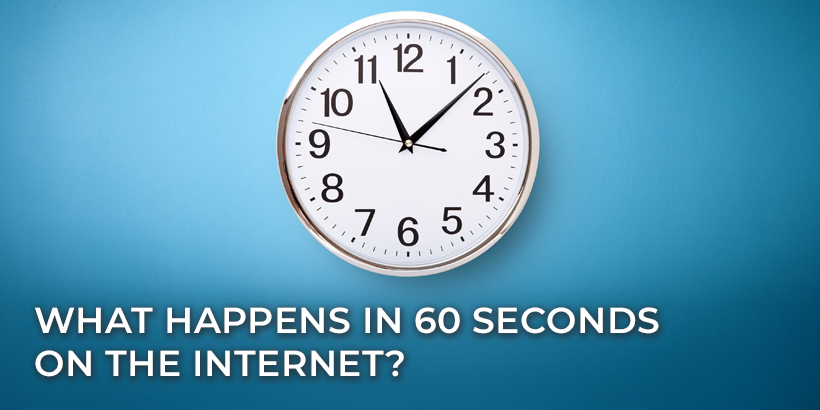
In 1995, Newsweek ran an article claiming that all the hubbub about the Internet was overblown. It’s online communities couldn’t possibly replicate the benefits of face-to-face interactions, so “this trendy and oversold community” would never last.
The author claimed online stores were overblown and that “my local mall does more business in an afternoon than the entire Internet handles in a month”.
How embarrassing.
In spite of early predictions about how the internet was much ado about nothing, it continues to grow as a place for consumers to congregate. And they’re spending more time there, too. For brands that advertise online, this is good news. But there’s a growing problem, too: the time consumers spend online is busier than ever.
Visual Capitalist recently analyzed data from major media platforms to see what happens in a minute on the Internet. What they found is astounding. Marketers are fighting a grueling uphill battle for consumer attention.
Here’s what marketers should know about a minute on the Internet. (And what you can do to stand out.)
People make tons of searches
The Internet is one of the first places people often go to do research. It’s also where they go to find content that entertains, inspires, or challenges them. It’s where they look for help solving their problems and reaching their goals.
Typically, that starts with Google. Every minute, the world makes 3.8 million search queries on Google.
Today’s marketers need to investigate what their audience is searching for, and find ways to appear on the sites that rank for those searches or else create content that meets the demand.
People see a lot of content
This is where things get really crazy. In 60 seconds, people and brands around the globe collectively:
- Send 188 million emails
- Log in to Facebook 1 million times
- Create 2.1 million snaps
- Watch 694,444 hours of video on Netflix
- View 4.5 million videos on YouTube
That’s a lot of videos, posts, and photos. And if you’re a marketer, that’s a lot of competition for your audience’s attention. The sheer volume of content on the Internet and the proliferation of media platforms is a good reason to consider going where your audience already is, rather than building an audience from scratch.
It takes a lot of work to consistently create quality content. If your brand can’t dedicate the resources to produce competitive articles or videos on a regular basis, you might want to look into working with the brands your audience already knows and loves.
People spend a lot of money
According to Visual Capitalist, every 60 seconds, the world spends $996,956 online. Let that sink in. Almost a million dollars per minute.
Clearly, there are a lot of opportunities to make sales online. Some product categories or services are more suited to online sales than others, but purchasing online is usually more convenient for consumers than physically going to a store or calling your office. If you optimize your website, streamline the path to purchase, and create compelling ads, you can get a bigger slice of that pie.
How will you stand out?
If you want to capture your audience’s attention, you need to take intentional steps to make sure your brand stands out.
Here are three things you can do.
Catch your audience when they’re focused
As the Internet minute gets busier, it will only become harder for advertisers to make an impression. We mentioned before that you might want to consider advertising with the publishers your audience already pays attention to, or invest in establishing your brand as a thought leader in your space. But there’s another route you can go, too. Advertise in a medium where people are less busy: print.
Your audience experiences print materials differently than online content. They experience print ads more like part of the content than an intrusion. They remember what they see in print ads more clearly. And when it comes time to make purchasing decisions, they trust print ads more.
Leverage influencers
Another strategy is to find the people your audience listens to, and make an effort to reach them. Pastors, for example, have a major influence on their congregation. If you’re trying to reach church members, you should try to establish yourself as a brand pastors want to recommend.
Communicate effectively
When people have an inexhaustible supply of videos, articles, and images to explore, you can’t afford to waste their attention. Many brands let jargon and complicated messaging drive their audience away. If you want to reach your audience, you need to keep your language simple, so they’ll stick around long enough to hear what you have to say.
The Internet is becoming a busier place every year. But for smart advertisers, that doesn’t have to be scary. You just have to know how to ensure that your brand is one people are willing to spend their time on.